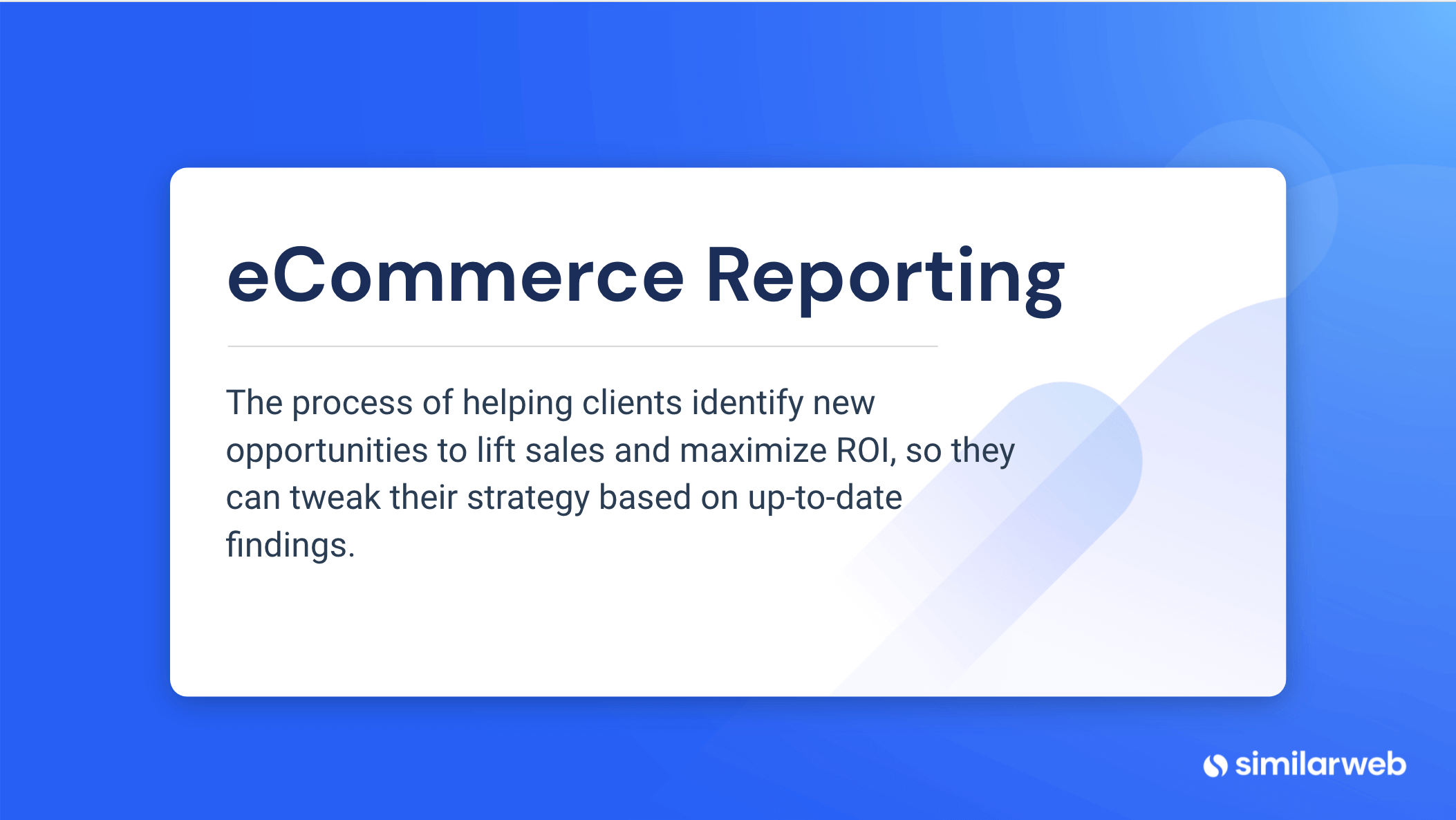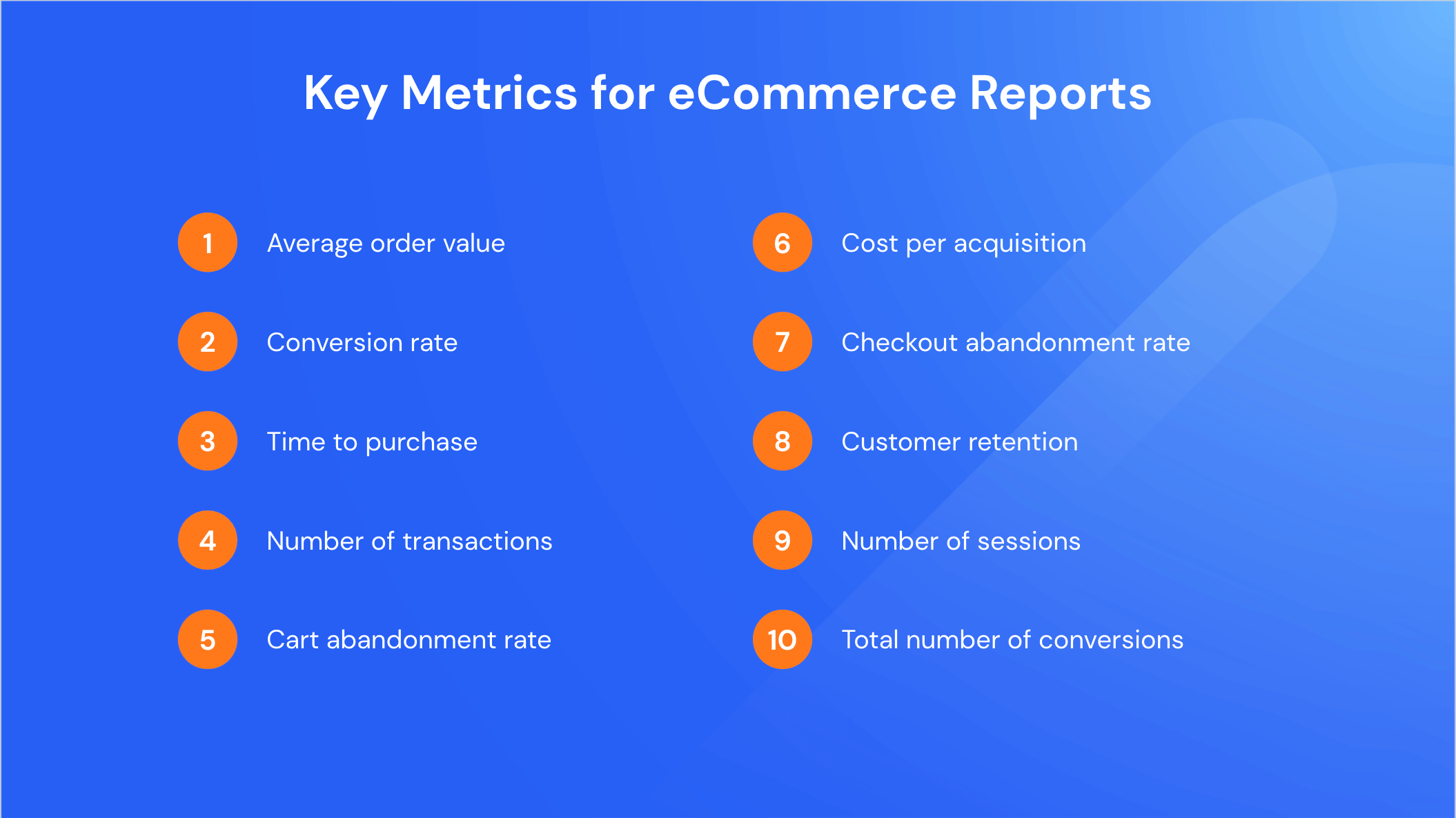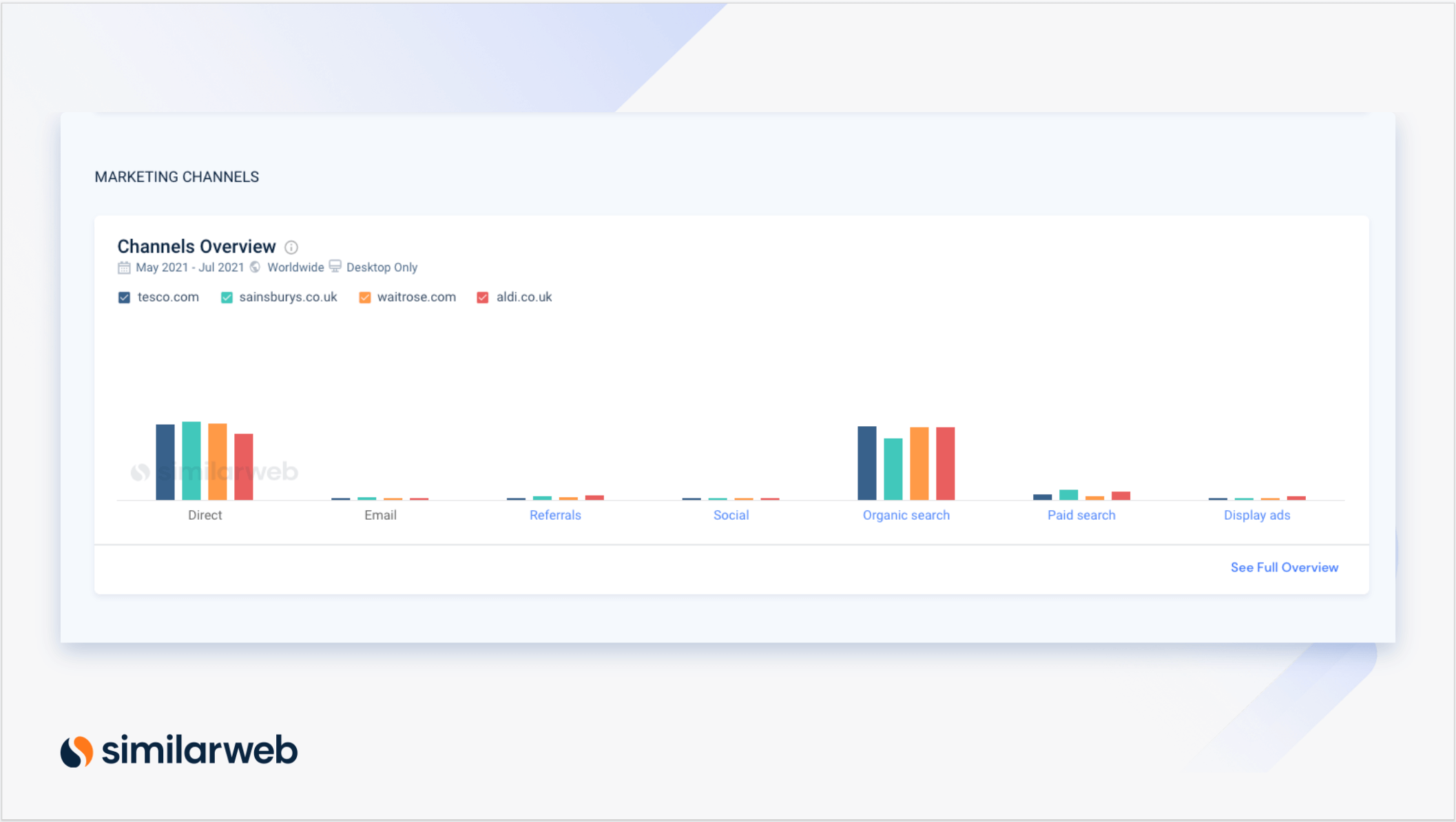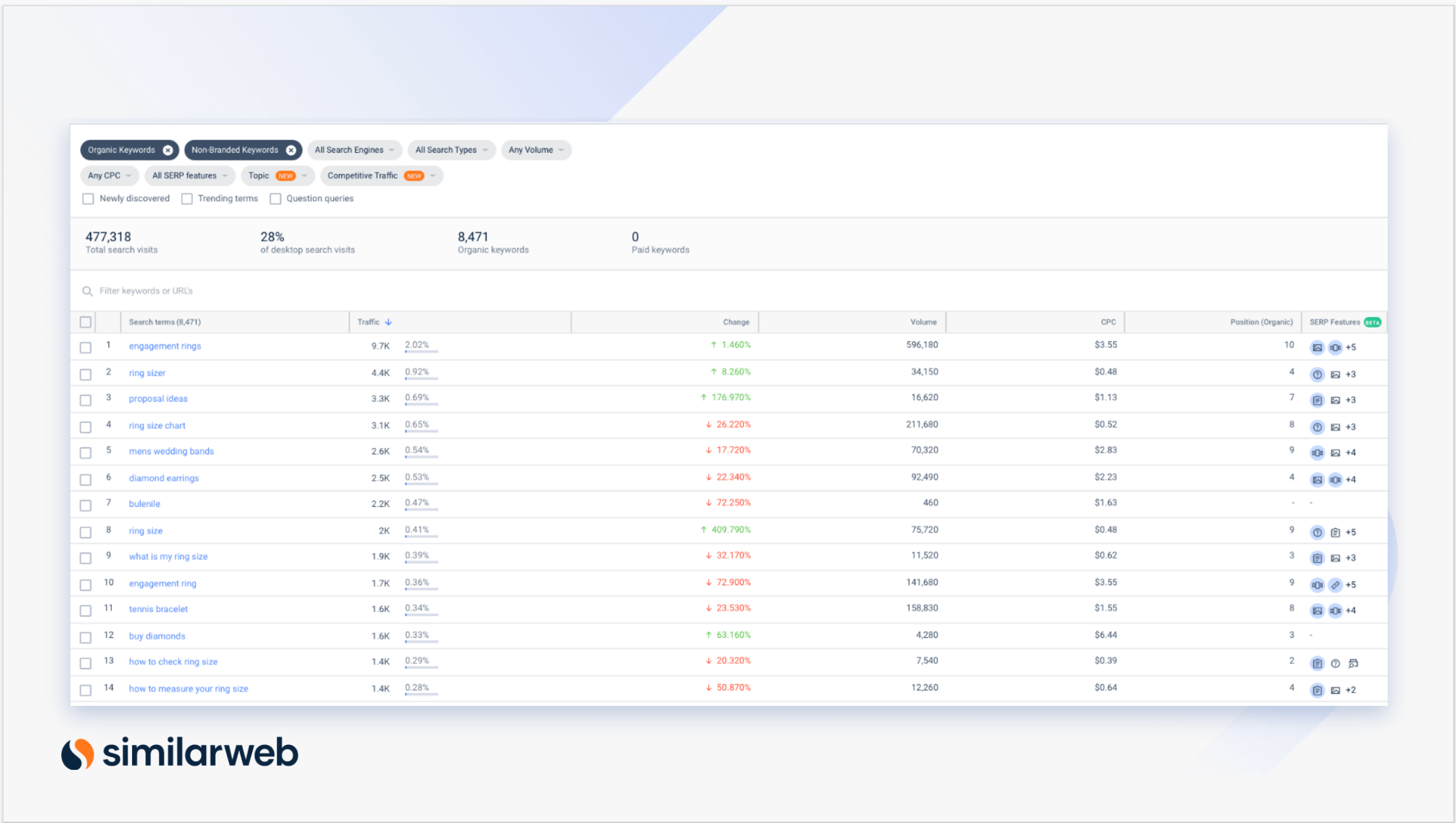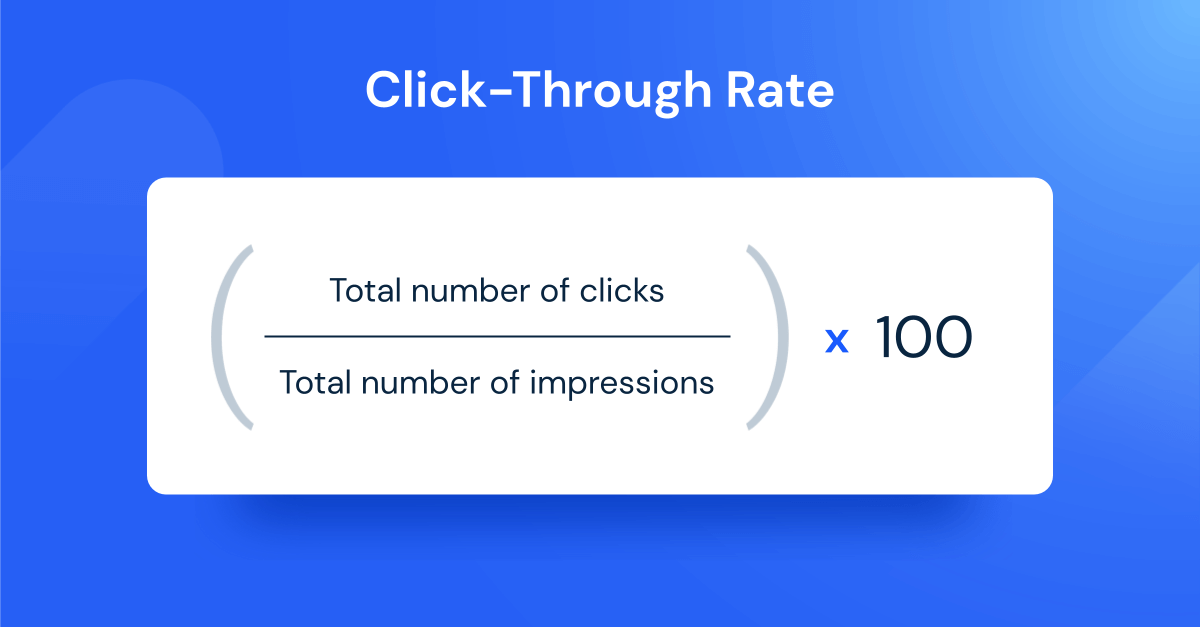eCommerce Reporting That Transforms Data Into Strategy Gold

The eCommerce world runs on data.
Understanding the performance of a client’s website or app gives you critical insights to improve their strategy – and results.
This is where analytics for agencies come into play. When you have real-time data you can keep your clients’ strategies agile. Clear visualizations showcase that data and analysis make for effective reporting.
Keep reading for a breakdown of how to identify the right engagement metrics for eCommerce reporting and present the data in the most actionable way for your clients.
Metrics for eCommerce reporting
Virtually everything in the eCommerce space can be measured.
It’s not as overwhelming as it sounds. With the right eCommerce reporting structure, you can organize and analyze the data in a clear and methodical way.
For agencies, helping clients to identify opportunities to increase sales and reach will be key. That starts with the right data.
Effective eCommerce reports give clients the data they need to make better-informed, smarter, and more tactical decisions about the future direction of their eCommerce site.
The best part: There’s no guesswork involved. Here are some of the types of metrics to track and consider including in your report:
Beyond these metrics, you can create visuals to show clients’ consumer journeys and benchmark their performance against competitors.
There is a disclaimer here. The numbers mean nothing without skilled analysis to spin the data into information gold. An effective eCommerce report starts with data but doesn’t overlook analysis.
The key is in the eCommerce analysis
You have the data. You have the benchmarks. But what do they mean?
Data is the raw material you capture from various eCommerce analytics tools (such as Google Analytics), and it comes in the form of numbers and statistics. These unorganized facts need to be processed into information with a reporting tool to be understandable and meaningful, otherwise, it’s hard to see patterns in the cloud of numbers. Only then, with context, can conclusions be drawn that craft strategies and shape your client’s future direction.
A quality eCommerce report gives actionable insights to clients on:
- Ways to claim a larger market share
- Targeted pricing strategies
- How to expand their regional focus
- Ways to lift their sales
- Ways to increase customer lifetime value (CLV)
By gaining a deeper understanding of how visitors are using shopping and ecommerce websites, for example, clients can create targeted marketing efforts.
eCommerce reporting can also help you to identify shifting consumer trends using behavioral data metrics, which can help show you where consumers are looking for specific products and how your client can optimize pricing strategies accordingly and boost product revenue.
For example, benchmarking against the wider industry and analyzing cross-shopping behavior helps identify ways to win back market share and impact your client’s conversion rate. Below, you can see that over a quarter of customers who shop on Etsy.com also visit Amazon.com. The key here is to take the data a step further and give recommendations to support customer loyalty.
Bottom line: Don’t underestimate the value of the analysis and recommendations drawn from the data. This is what will make your eCommerce report high value for clients.
Turning metrics into goals
Your eCommerce reports for clients are going to look different, depending on their specific goals. Keeping clients’ goals at the center of the report will ensure it is focused and useful.
Examples of goals include:
- Cross-selling and up-selling: Existing customers often promise bigger returns than new customers, and your data can help build a remarketing strategy to up-sell and cross-sell to them. Improving customer retention rates by a mere 5% can increase profits by over 25%, according to Bain & Co.
- Developing a new product: When designing or preparing to launch a new product, clients look to the data to drive their marketing and development planning. Delivering clear evidence of consumer preferences and buyer behavior can be key in shaping a successful launch.
- Delivering superior customer service: In a crowded marketplace, customer service is more important than ever. Identifying parts of your client’s eCommerce business where users struggle to find what they want and offering improvements can reduce friction and bounce rates, and ultimately deliver a higher conversion rate.
- Maximizing ROI on advertising spend: Analytics reports can help your client identify gaps in their funnel where their ad spend is failing to deliver the expected returns. Spotting opportunities in this way can increase targeting and build a stronger ROI.
3 Types of eCommerce reports
A powerful eCommerce report will reflect directly on the wider aims of your client’s digital marketing strategy, ensuring that you’re targeting the right metrics and eCommerce data points is key to success.
Let’s drill down into some of the more specific reporting types:
1. Reports for sales growth optimization
For a report focused on improving client sales, your focus should be on insights that unpack the buying habits of their customers. Here are some of the key considerations for this kind of report:
- Look at metrics that reveal shopping behaviors: Your first data point will likely be sales over time, but you will also want to break down those sales by vendor, product, technology, and point of sale (POS) location when your client operates across multiple online store outlets. It’s important to analyze the right eCommerce metrics here, so examine the time of day and when in the week heavier order rates tend to occur, as this can inform future promotions or marketing campaigns.
- Find out which marketing channels are the most effective: Identify the traffic sources that are delivering the most total revenue for your client, as well as those which are underperforming. Include a high-level overview of the top sources of traffic to help optimize future paid ad campaign investments. These metrics will also help your client identify their level of brand recognition, and how well their search engine optimization (SEO) is working, although that may require a separate, in-depth SEO report.
- Consider the most valuable markets: Pulling together data on which audience geographies generate the highest rate of sales is key for a larger eCommerce client considering markets to expand in or audiences to target with their marketing campaigns. You’ll also want to look at the best-performing, high-intent keywords in your client’s market, to identify the biggest areas for potential traffic generation.
- Think about conversion rates: Few eCommerce reports are truly complete without your client’s conversion rate, which gives a clear picture of the points where potential customers are dropping out of the funnel. Combine it with an analysis of shopping cart abandonment rates and you’ll be able to identify key areas for improving the checkout process through messaging, user experience (UX), or even design.
2. Reporting on customer habits
This kind of report presents an overview of your client’s industry, and your focus should be on customer behavior trends to spot gaps in the market your client can exploit. This type of report might be requested ahead of a specific product or market launch, or when taking on a brand-new client.
- Sessions by device: Everyone’s talking about mobile, with 54.8% of global website traffic originating from mobile devices in the first quarter of 2021. This means that eCommerce businesses need to ensure their systems work as effectively and that their messaging is as persuasive across a range of different devices. If, for example, they’re experiencing a much higher bounce rate or lower conversion rate on one type of device, there’s clearly a problem that needs to be addressed. Therefore, analyzing your client’s audience profile by looking at sessions by a device is key to identifying any inconsistencies between types of traffic that might point to friction.
- Look at customers’ top searches: An enhanced eCommerce report will include the searches most frequently entered on your client’s website. This can help identify popular products or promotions, but also weaknesses in the UX if, for example, you discover a high rate of searches for ‘account help’ or ‘delivery options’. Either way, you’ll present your client with clear information detailing what should be addressed and how.
- Competitor analysis: Identifying the leaders in your client’s industry who are building their market share can help the client plan a strategy to counteract those developments, such as launching a targeted promotion, keyword campaign, or marketing surge.
- Find out where customers are coming from: Looking at typical PPC metrics such as click-through rates (CTR), cost per lead (CPR), and cost per acquisition (CPA) captures a clear sense of customer behavior and helps your client target the channels and affiliate partners that are delivering the greatest value and ROI.
3. Reporting on profit margins
These reports are used by finance departments to plan future budget commitments across sales and marketing teams. They should focus on calculating an accurate expected ROI figure for different activities, so your client avoids investing in expensive advertising that only yields a small uplift in sales. Similarly, these reports can help clients plan promotions and campaigns for the right products, or even bundle together a product with a high ROI with another that sells well but has a slim margin.
- Break down profit margins in detail: This metric can be especially helpful for clients with a large product portfolio that has become a bit unmanageable. By identifying the exact margin they’re making on each item, they can form a much clearer promotional strategy, and perhaps even reconsider their pricing model.
- Providing a wider financial summary: Here you’ll be breaking down your client’s overall sales, gross profit, payments, and liabilities over a particular period. There are a million different ways to break down these eCommerce metrics, so choose the time frame, channel, and level of detail that’s appropriate for your custom report. Usually, you can choose to filter by average order value, order quantity, returns, and a range of other categories to build a useful, actionable report that doesn’t overwhelm your client.
Delivering the insights your clients need
A busy agency simply doesn’t have the time to manually collect metrics or key performance indicators (KPIs) for every client. As portfolios grow and clients request more specific findings, easy-to-use systems become the only practical way of gathering the information you need.
Similarweb’s tools give you instant insights into your client’s industry and competitive landscape so that you can focus on analysis and providing your clients with strategic insights.
Our competitive intelligence tools integrate across all the key platforms and present information in a clear and functional way with easy-to-understand visuals. With real-time data from Similarweb, your clients can see the full picture and make informed business decisions.
After all, good client reporting is essential to maintaining and retaining a strong relationship over an extended period.
Further reading: How to Do a Competitive Analysis: A Complete Guide
The ultimate edge in marketplace intelligence
Put the full picture at your fingertips to drive product views and sales
